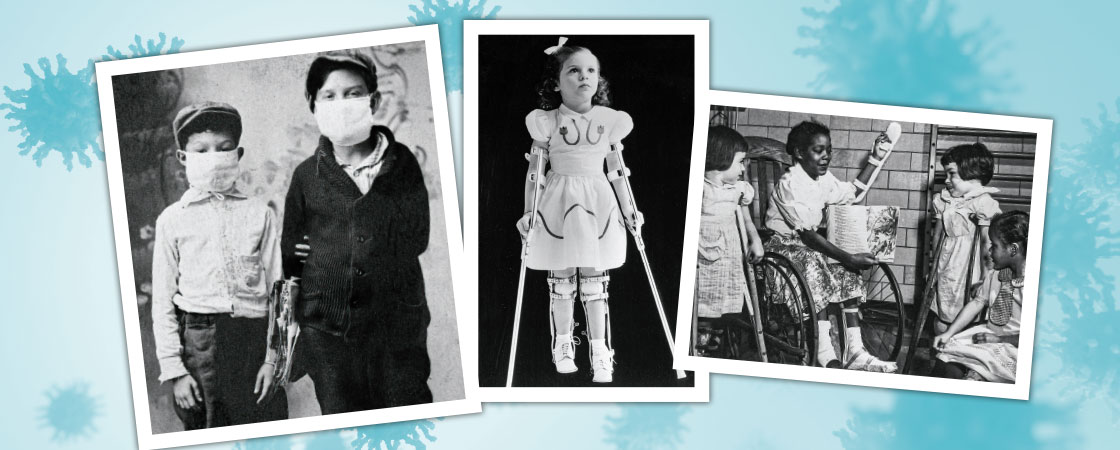COURTESY OF LAUREN TARSHIS
I wish you had known my grandmother. She was warm and funny. I know you would have loved her. (She definitely would have loved you.)
She was born in 1920. Often she’d tell me stories as we flipped through her photo albums. I especially loved her wedding photos from 1938. My grandmother was beautiful in her white dress. And her 10-year-old cousin, Dolly, looked adorable as the flower girl.
But my grandmother told me that under that dress, Dolly had metal braces on her legs. The braces helped her stand. They were tied to her legs with leather straps. At my grandmother’s wedding, Dolly made her way down the aisle with the help of two wooden crutches.
Dolly’s legs had been damaged by a disease called polio. Until the 1950s, polio was one of the most feared diseases in the world.
My grandmother was kind and funny. She was born in 1920. She often told me stories about her childhood. I loved looking at photos from her wedding. Her 10-year- old cousin Dolly was the flower girl.
Dolly wore metal braces on her legs. She used crutches to walk. That’s because her legs had been damaged by a disease called polio.
I wish you had known my grandmother. She was warm and funny. I know you would have loved her. (She definitely would have loved you.)
She was born in 1920. Often she’d tell me stories as we looked at her photos. I especially loved her wedding photos from 1938. My grandmother was beautiful in her white dress. Her 10-year-old cousin, Dolly, was the flower girl. She looked adorable.
Under her dress, Dolly wore metal braces on her legs. The braces helped her stand. They were tied to her legs with straps. Dolly used two crutches to walk at the wedding.
Dolly’s legs had been damaged by a disease called polio. Until the 1950s, polio was one of the most feared diseases in the world.
I wish you had known my grandmother, Jennie Ross. She was warm and funny, and I know you would have loved her. (She definitely would have loved you.) Born in 1920, she lived a long life. It was mostly happy but sometimes very difficult.
Often she’d tell me stories of her childhood as we paged through her photo albums. I especially loved her wedding album, filled with glossy photographs from 1938. My grandmother was beautiful in her pearl-white dress. I was especially fascinated by the flower girl, my grandmother’s 10-year-old cousin, Dolly Yasnitz. She reminded me of the star of the movie The Wizard of Oz.
But as my grandmother told me one day, there was something more striking about Dolly than her adorable smile. Under that blue dress, Dolly’s little legs were covered with metal braces. The braces, bound tightly to her legs with leather straps, kept her stable so she could stand. At my grandmother’s wedding, she made her way down the aisle with slow, halting steps, with the help of two wooden crutches.
Dolly’s legs had been damaged by a disease called polio. Until the 1950s, polio was one of the most dreaded diseases in the world. It killed thousands. Many who survived were like Dolly, left with lifelong damage to their limbs.

